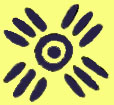

Archipiélagos was commissioned and written for virtuoso Venezuelan Clarinetist Jorge Montilla. I've known Jorge for many years since he taught at the "Núcleo la Rinconada" (one of the centers of the "El Sistema" in Caracas) where I was the music director and conductor over two decades ago. In 2008 my piece "Wuaraira Repano", for solo clarinet and orchestra, was included in the "XV Festival Latinoamericano de Música" where Jorge was one of the guest performers and soloed in my piece. It was a great opportunity to work with Jorge again. He then commissioned me to write for him a virtuosic piece for Eb clarinet and piano, I happily agreed, and that was the beginning of the idea for "Archipiélagos", although I only started and wrote the piece in 2011. The piece for Eb clarinet has four movements, all named after different archipelagos of Venezuela. I also made a flute and piano version in 2014.
When writing this piece I kept going back to my memories of all the beautiful shores and islands in Venezuela, and yet I kept also thinking of the socio-political anxiety that the whole country faces today. As I was writing this carefree and upbeat music, somehow the Venezuelan national anthem kept appearing here and there, a symbol to remember that we have a beautiful country, which we could lose forever to invasive ideologies and powers. The national anthem quotations are very subtle, and unless you're Venezuelan, it would be very hard for someone to notice them.
The first movement, "Las Aves" (The Birds), is one of the most important archipelagos in Venezuela, not only because of its ecological importance, but also for its strategic location in the Caribbean. As in many of these archipelagos, there are several keys and islets all belonging to "Las Aves". As the name indicates, "Las Aves" is a sanctuary to sea and migrating birds. This first movement is divided in 5 shorter sections. The "A" section is a slow introduction, a "sunrise on the beach" type of mood which will grow as one decides to dive into the water, full of joy and good energy to the "B" section featuring a piano solo, rather bare, but with a catchy rhythm leading to a clarinet/flute cadenza, followed by a dance when the piano joins in, this dance will grow in complexity using the same ostinato harmonic frame while the clarinet/flute keeps getting more and more complex, until the material from the "B" section takes over now with the clarinet/flute singing above the "waves" of the piano.
The second movement, "Los Frailes", is basically a rondo also in 5 parts with a short codetta, (A, B, A1, C, A2). Each time the refrain comes back it's shorter, but it gets more virtuosic for the clarient/flute. The episodes are really variations of the same material presented in different contexts, "B" is faster and driven while "C" is more introverted.
The third movement "Los Testigos y Los Monjes" named after two set of archipelagos, each located on the opposite extremes of the Caribbean Sea, Los Monjes are on the farthest western part, very close to Colombia while Los Testigos are to the east part of the country between our own Margarita island and Trinidad. The first part of the movement, "Los Testigos" is based on a somewhat calypso dance. A twelve-bar-phrase is repeated four times but with each repetition the texture grows and becomes more driven each time. This will lead to a very subdue an introvert section, depicting "Los Monjes". A cheerful slow dance will appear to lead us back to the introverted material then while flashes of the dance try to sneak in every time more often leading us to a reminiscence of the opening material but much more subdue, dying away with a short quote of the Venezuelan Anthem to end the movement.
The last movement is called "Los Roques", named after one of the most famous vacation destinations in Venezuela because of the many beautiful hidden beaches within the small islands. This movement has three main sections; the first is more a declaration, very much influenced by Afro-Venezuelan music leading to the middle section where the clarinet/flute sets a rhythmical ostinato while it also keeps the material of the first section going, creating the illusion of two different instruments playing at the same time. The piano answers, and after this is repeated in a different key, the music leads to the same dance at the end of the first movement driving the piece to a climatic ending.
Efraín Amaya
Archipiélagos - 2014 (flute and piano version) 20:00 (four movements)
Piano score & part (1) $30.00
Archipiélagos - 2011 (Eb clarinet and piano version) 20:00 (four movements)
Piano score & part (1) $30.00
Archipiélagos - 2016 (Alto Saxophone and piano version) 20:00 (four movements)
Piano score & part (1) $30.00

Copyright © 2013 LaFi All rights reservedDesigned by Efrain AmayaE-mail: lafi@lafipublishers.com